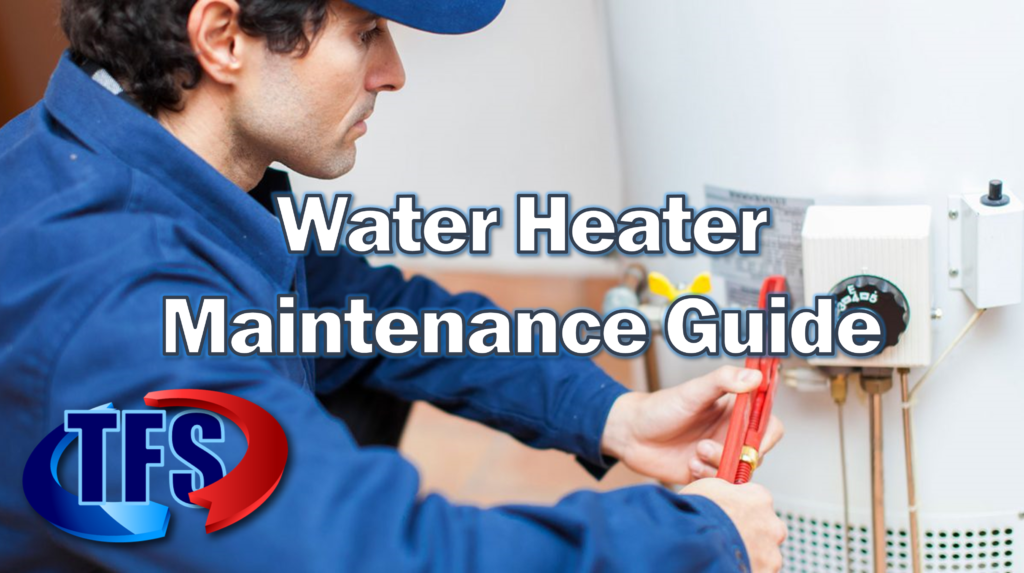 Water Heater Maintenance Guide
Water Heater Maintenance Guide
You may not realize how often you use your home’s water heater, but that changes the moment it breaks. Water heaters are important in that they keep your water running hot. This guide will show you how to complete some of the most common water heater maintenance tasks to keep this vital appliance up and running.
How to Flush a Water Heater
You’ll have to drain a water heater in order to flush it. We’ll show you how to drain a water heater easily.
- Before you start, make sure to turn off your water heater. Once it’s off, you may go to the next step.
- Connect a standard garden hose to the water heater drain outlet near the base. Place the other end of the hose near a floor drain or in a large bucket.
- Draining a water heater will take between 20 and 25 minutes total.
- Flush sediment from the bottom of the heater by opening the drain spigot and allowing the water to flow until it runs clear. This is how to clean a water heater.
Tip: The build up of sediment in the tank can reduce your water heater’s energy efficiency and also clog your water lines. Avoid these problems and increase the life of your unit by flushing your water heater every six months.
Adjust the Water Temperature
- If you have a gas water heater, the temperature can easily be adjusted with the thermostat located on the tank.
- For an electric water heater, shut off power to the unit by flipping the breaker at the service panel.
- Pull back any insulation to expose the thermostat.
- Use a screwdriver to change the thermostat temperature in 10-degree increments.
- Close the panel, turn the power on, and check the water temperature after one hour.
- Adjust again if necessary.
Open the Access Panel
- If you gave a gas water heater, lift off the access panel at the bottom of the tank.
- Remove the heat shield and check to see if there is a flame. If not, shut off the gas supply valve.
- Disperse any excess gas by gently blowing into the opening before you attempt to relight the pilot.
Relight the Pilot
- Turn the knob on top of the control box to the “Pilot” position.
- Hold a lit fireplace match or barbecue lighter to the pilot access opening.
- Press and hold down the reset button on the control box for 60 seconds after the pilot ignites, then turn the control knob to the “On” position.
- Replace the access panel.
Tip: To maintain the upkeep of your water heater, flush your water heater every six months or so. If you have harder water, or water that contains more minerals, you may want to flush it more often.
Common Parts of a Water Heater
Below are some common water heater parts.
- Flue pipe: Expels a water heater’s exhaust gases and other byproducts outside.
- Hot water outlet: This drains hot water if there is too much pressure in the water heater.
- Dip tube: Deposits cold water to be heated.
- Thermocouple: Connects to the gas control valve outside the heater and is a part of the pilot light assembly.
- Drain valve: Drains the water heater water.
- Anode rod: Helps prevent the water heater from corroding or wearing out.
- Insulation: Prevents heat from escaping your water heater and saves you money.
- Cold water shut off valve: Stops cold water from entering into your water heater.
- Gas supply valve: Turns off gas on a gas water heater.
- Draft diverter: Gathers exhaust gases and then safely vents them out to the exterior.
- Thermostat/Control Valve: Controls the water heater’s temperature.
- Temperature and pressure relief valve (T&P valve): Lowers the temperature and pressure of the heater by discharging water.
- Burner: Heats the cold water when the pilot light is lit.
- Elements: Each water heater has elements that heat the water in the heater.
- Overflow pipe: If the water inside the tank gets too hot, this pipe releases some hot water to relieve pressure.
Water Heater Maintenance Tips
- Flush your water heater every six months or so.
- If you leave town, change your water heater to its vacation setting. The pilot light will stay on, but the water will not be heated.
- Drain your tank and remove sediment.
- Check your anode rod regularly, as it’s an important part of the water heater.
- If you notice your water heater leaking, it may be caused by a loose drain valve. Tighten with a wrench until snug.
- Test the temperature release valve annually.
- If your unit is older, insulate its pipes and the heater.
- Turn the thermostat to 120 degrees Fahrenheit.
- Tankless water heater maintenance: Good news about tankless water heaters is that they don’t require much maintenance. However, it’s recommended they be serviced once a year.
- Electric vs. gas water heater maintenance: Both electric water heaters and gas water heaters can be maintained in similar ways. Both types of water heaters should be flushed regularly to prevent a build-up of rust and corrosion.
- If you’re looking for more energy-efficient water heaters, look into hybrid water heaters.
Without knowing, you use your water heater almost everyday, so it’s important to keep up with water heater maintenance. By following the steps in this guide, you’ll ensure your water heater is taken care and remains in good working order. And if you ever need help with water heater installation, Total Fuel Service has you covered.
